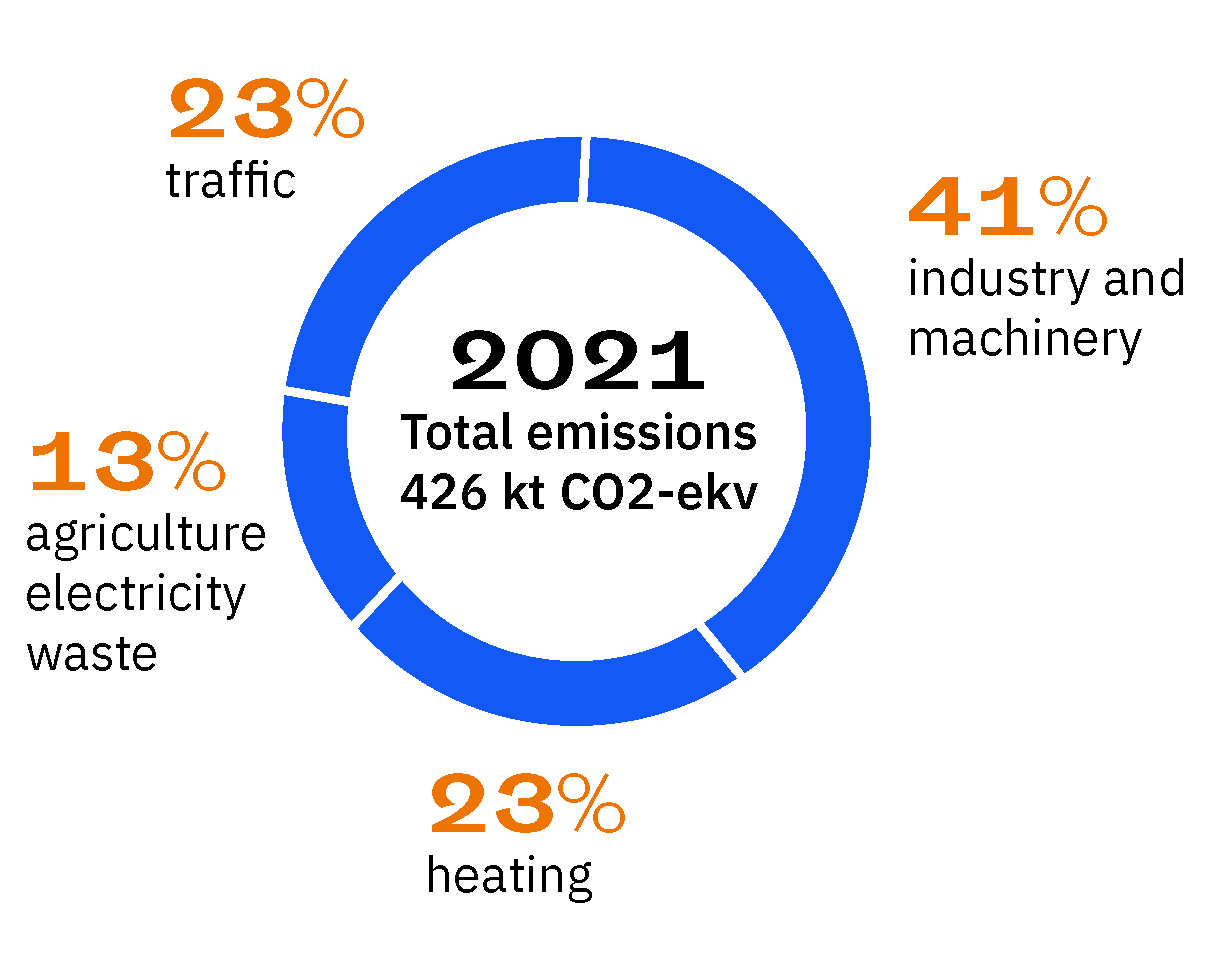What do our emissions consist of?
What do our emissions consist of? alasivun pääkuva
What do our emissions consist of?
What do our emissions consist of?
Joensuu monitors the development of the regional greenhouse gas emission level through CO2 report
Joensuu monitors the development of the regional greenhouse gas emission level through the CO2 report, which publishes annually. CO2 report is published by the environmental and energy sector consultancy company Benviroc Ltd. Joensuu’s emissions have been monitored since 2007.
The CO2 report monitors greenhouse gas emissions by sector, using the data for 2007 as a year of reference for comparison of the emission levels. Only emissions generated within Joensuu, such as district heat consumed in Joensuu and the emissions for journeys made in Joensuu, are taken into account in measuring the emissions. The various types of greenhouse gas emissions are presented in the report as carbon dioxide equivalents (CO2 eq). Carbon dioxide equivalent combines data for three different greenhouse gases (carbon dioxide, ethane and dinitrogen oxide) and commeasures them to correspond to the impact of carbon dioxide on the environment.

The biggest emitters are the sectors of industry and work machinery, and the traffic
In Joensuu, industry and work machinery are the biggest sources of emissions. In 2019 they accounted for 41% of total emissions. Both fuel and electricity consumption by industry are included in these emissions.
Long distances and sparse population increase emissions from road traffic. Reduction of emissions from traffic therefore presents the a big challenge.
In total, greenhouse gas emissions have decreased by 29% in Joensuu from 2007 to 2019. Energy production accounts for the most significant reductions in emissions, but energy efficiency of real properties has also improved markedly. The emissions from agriculture, waste management and traffic have remained rather unchanged in recent years, while the emissions from industry have been on the decline.
In the next few years, energy production and industry have the highest potential for reducing emissions. Better energy efficiency will also reduce emissions.
To reach our goal of being carbon-neutral by 2025, we need firm measures to reduce emissions. It is also important to increase the size and number of our carbon sinks.
